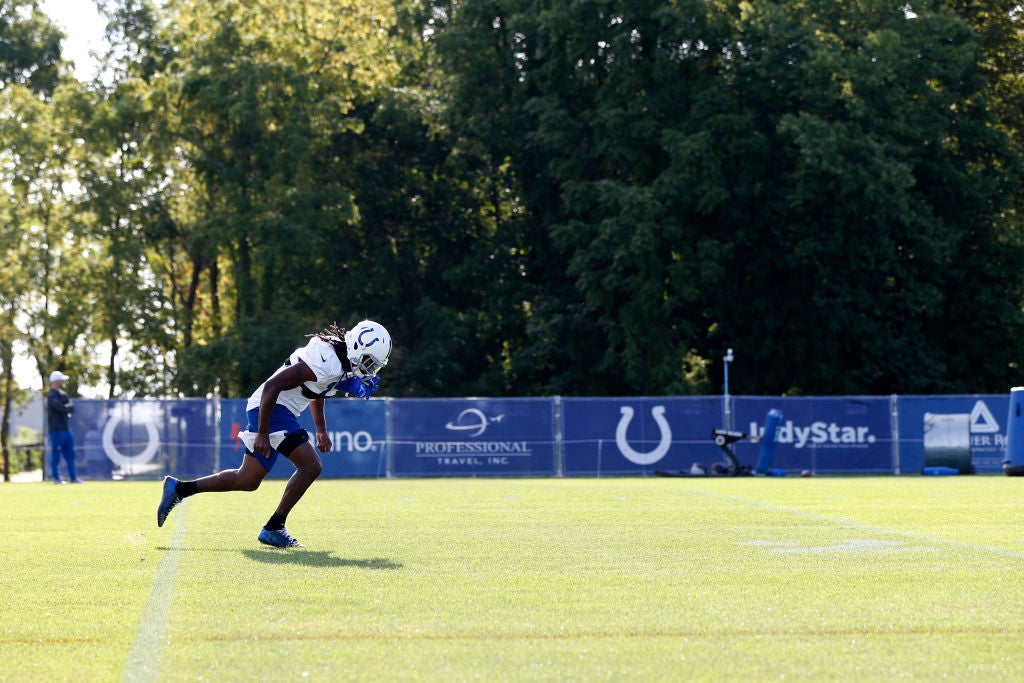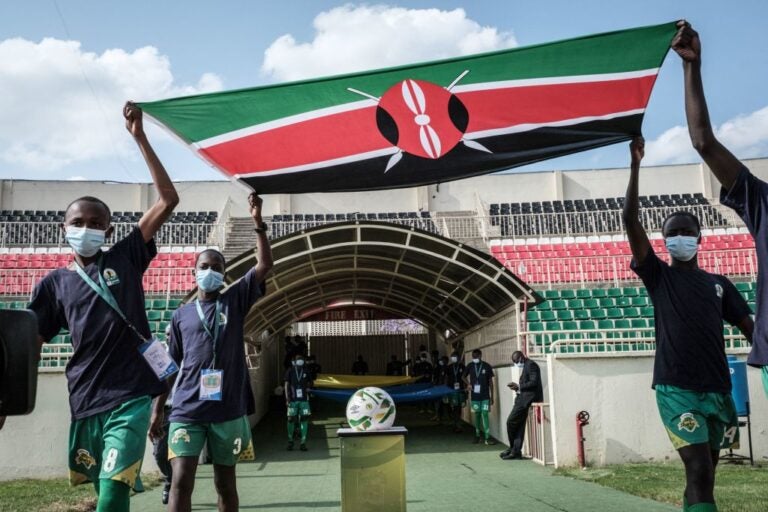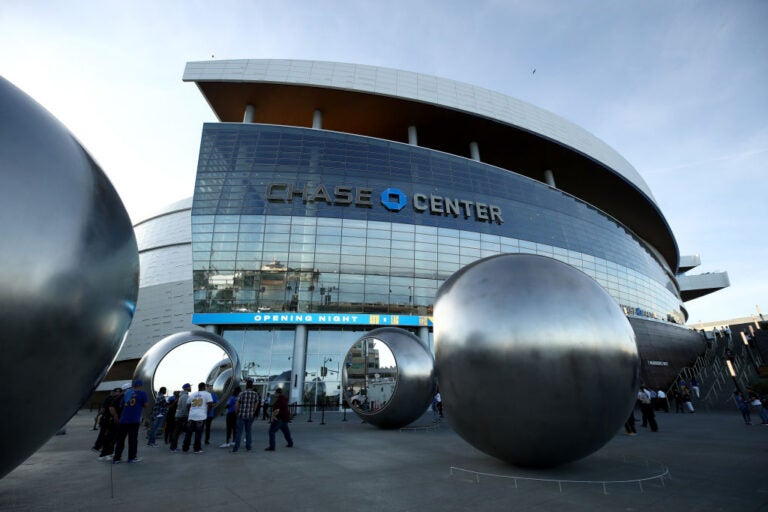Youth Sports Megaprojects Put Cities ‘On the Map,’ But Can They Profit?
Why this matters
Big-time sports districts used to be the domain of pro organizations. As youth sports follows suit behind massive spending from venture capital, youth sports megaprojects can change a community, for better and worse.
Built with $49 million in public money, the Grand Park youth sports complex in Westfield, Indiana, has been smashingly successful at achieving its stated goal: transforming an anonymous town in the Indianapolis exurbs into a tourism magnet.
Westfield originally estimated that Grand Park – a sprawling, 400-acre youth sports complex about four times the size of Vatican City that opened in 2014 – would draw 500,000 visitors annually. In 2022, the city projects that it will draw 2.5 million. When caravans of SUVs stuffed with parents and kids from all over the Midwest and beyond stream into the complex on almost every weekend, Westfield Mayor Andy Cook’s (no relation to the author) original vision to make his city the self-declared “Family Sports Capital of America” sounds less hyperbolic than prophetic.
Moreover, Grand Park’s example has ignited a youth sports building frenzy that, according to Sports Business Journal, accounts for $9 billion spent or committed since 2017, much of that coming from taxpayers. All across America, local governments are pitching in to construct complexes designed to feed the dreams of would-be future sports stars – while also boosting the bottom lines of local hotels, restaurants, and other businesses.
Despite Grand Park’s success, however, Westfield is now trying to get out of the youth sports business. The city has put out a call for bids to either sell Grand Park outright to a private entity or to strike a deal for a public-private partnership.
Related: What American Youth Sports Can Learn from the World
The reason? As it turns out, all those visitors arguably aren’t creating enough economic activity. Grand Park generates $6 million a year for Westfield – but by one local politician’s estimation is still for the city. Meanwhile, the area around the complex, which was supposed to be filled with businesses drafting off visiting families, remains mostly undeveloped.
In professional sports, this is an old and familiar story: Buoyed by promises of more jobs, higher tax revenues, and local economic development, states and cities invest millions and billions of dollars into stadiums, arenas, and ballparks. In case after case, however, those benefits fail to materialize. Westfield’s experience with Grand Park suggests that the same may hold true for subsidizing youth sports facility construction – and that the ongoing U.S. building boom may not produce the desired return on investment for communities seeking to attract those caravans of SUVs.
“As a business entity, it’s hard to imagine youth sports, the facilities component, are going to be economic game-changers for anyone,” said Michael Hicks, a Ball State University professor and director of the school’s Center for Business and Economic Research.
‘On the Map’
In 2007, Westfield was a sleepy Indiana town of roughly 15,000 people looking to make a name for itself through sports. Working with the Hamilton County Convention and Visitors Bureau, Westfield initially considered building a 9,000-seat minor-league baseball stadium.
By 2009, however, the city had shifted to the idea of spending tax dollars on a large youth sports complex, an idea that wasn’t entirely unheard of. In 1990, the National Sports Center opened in Blaine, Minnesota, as a sports tourism destination. Constructed with $55 million in state and local funding, the complex is now operated by a foundation that is responsible for all revenue and costs. A year later, a private developer built the Mid-America Sports Complex in Shawnee, Kansas; subsequent financial trouble led the Johnson County parks department to take over the 10-field baseball and softball venue, which it continues to operate.
For Westfield, the decision to follow suit was rooted in three ideas. First, youth sports seemed like a durable investment: Even in the teeth of the Great Recession, American parents were moving heaven and earth – and money from their checking and credit card accounts – to keep their kids in extracurricular activities. Second, that willingness to spend was believed to be especially true of higher-income families. Third, the collapse of housing growth following the financial crisis meant that exurbs such as Westfield needed to work a lot harder to burnish their brands and attract new residents.
In the city’s original development plan, Grand Park itself would represent only 16 percent of an area that would also include retail, hotels, sports and recreation mixed use, a corporate campus, a life science campus, schools, and residential units. Planners expected $90 million of overall development in the first four years of the complex’s life.
Grand Park opened with 31 soccer fields, 26 baseball diamonds, concession stands, and administration buildings. A $26 million events center was added in 2016, followed by some private sports-related businesses and a privately built indoor basketball center. That center now counts the National Basketball Association’s Indiana Pacers as a title sponsor, and the National Football League’s Indianapolis Colts hold their training camp at Grand Park.
From a sports and branding standpoint, Westfield’s investment paid off. Cook, the city’s mayor, promoted Grand Park to a national television audience. As the complex grew, so did the city. Today, it’s home to 50,000 people, and City Council member Scott Willis said that even if no more building permits were issued, Westfield would still grow to a population of about 70,000.
“I just retired from the Marines a few months ago, inspecting reserve units around the country,” Willis said. “When they asked where I was from, when I said Westfield, they’d say, ‘Oh, Grand Park.’ Westfield is on the map because of Grand Park. There is no doubt about it.”
‘They Probably Would Have Done Better with Money on Wall Street’
The direct economic benefits of the complex are much less certain. In 2021, Westfield reported that Grand Park generated $6.1 million in revenue against $3.4 million in expenses – but, according to City Council member Troy Patton, what looks like $2.7 million of tidy profit was actually wiped out by $2.9 million of depreciation.
“This is something we always like to tout to say, ‘Oh, we’re making money at Grand Park,’” Patton told a local news outlet. “I don’t care whether we make money or not, it is meant to be an economic driver and it’s doing that, but if you’re not even talking about the depreciation of $2.9 million, it is not making money. That’s OK, but this is for the taxpayers to understand that Grand Park does not make money. It’s OK, but we need to quit saying it makes money.”
There are other issues. Westfield owes at least $80 million in bond payments, including interest, for Grand Park. Willis said that about 30 to 40 acres set aside around the complex remain undeveloped, with hotels and retail relatively scarce. A 2017 study commissioned by the Hamilton County Sports Authority, a division of the county’s tourism department, found that most visitors to Grand Park weren’t sticking around any longer than the days of their youth tournaments and weren’t engaging in additional tourism. Information put out by Westfield for the Grand Park bidding process notes that of the five most-visited outside spots for visitors, four are shopping centers with grocery stores and restaurants. (The other is Purdue University.)
Related: How High Costs and Low Representation Prevent Black Youth From Playing Baseball
“The family that goes somewhere once a year is having much more of a vacation than the one with the kid going [to a sports tournament] every other weekend,” said Rick Buning, a senior lecturer at the University of Queensland in Australia, who conducted the 2017 study while he taught at Indiana University-Purdue University at Indianapolis.
In 2019, Westfield voters elected new City Council members, many of whom demanded more oversight about the operations and funding of Grand Park. Earlier this year, Cook announced that the complex was for sale.
“The city has been fortunate to have excellent leaders and staff to guide Grand Park since its inception, as well as great partners for its operations,” he said in a statement issued to WTHR-TV news in Indianapolis. “But even their efforts have limitations inherent in operating Grand Park as a municipality.
“We are at a point where we need the private sector’s input. They have access to capital that we don’t have to make further investments in the facility and, similarly, better ability to more adequately compensate the employees that have developed and operate this profitable business.”
A spokesperson for Cook did not reply to a Global Sport Matters email request for an interview and has told other news outlets that the mayor will not comment publicly during the bidding process. Westfield’s bid solicitation requires that the complex remain a youth sports facility, and Willis said that the city wants to prevent contrary development on land that remains a centerpiece of the community.
In Westfield, land values have been skyrocketing alongside housing values; with a median home price of $496,000, the city is one of the most expensive in Indiana. Still, council member Patton told The Current, a local news outlet, that he doubts the city will be able to sell the complex for its estimated worth of $200 million.
“If someone is willing to pay $200 million, throw in my house with it,” Patton said. “I’m pretty comfortable knowing nobody is going to pay $200 million for the asset or even $100 million for the asset unless we plan on bulldozing the place and putting up something else, which I think would be a mistake.”
Patton also said that he believes Grand Park has helped Westfield increase its tax base. Hicks, the Ball State professor, said that while the city’s bottom line return on the complex may equal its initial spending, there are other ways to evaluate the investment.
“The judgment isn’t, ‘Did they make a profit? Did they yield a rate of return better than Wall Street?’” he said. “They probably would have done better with money on Wall Street. To some degree, the ‘sports capital’ claim by Westfield is just another way of saying, ‘we want to be a high quality-of-life community.’
“I interpret that as the consequential economic effect of Grand Park instead of revenue from 8U soccer enthusiasts.”
The Imitation Game
Grand Park has spawned plenty of imitators, all of them funded in different ways. There is no one in the United States tracking exactly how many youth sports complexes have been built or exactly how much public financing has been poured into them. What’s clear, however, is that many rely, at least in part, on taxpayer dollars. In the case of one facility outside Atlanta, locals ended up on the hook for $6 million when its private developer declared bankruptcy.
While land prices and interest rates are currently rising, youth sports complexes are relatively inexpensive when compared to, say, a National Football League stadium. In fact, the reported $9 billion spent on youth facilities since 2017 is roughly equal to what has been spent on just four NFL stadiums (in Atlanta, Minnesota, Los Angeles, and Las Vegas) over the same period.
According to Hicks, it’s unlikely that another city will make like Westfield and fully build and operate a youth sports complex. But some amount of public largesse probably will make its way into future developments. Increasingly, private businesses are exploiting a model in which they pay the up-front costs of building a plant or warehouse, promise long-term economic benefit to the communities hosting those facilities, and receive tax breaks and other goodies from local governments.
It’s not a stretch to project that youth sports developers will adopt the same approach. “We have skin in the game, but the city has skin in the game,” said Andy Card, an Indiana-based developer of youth sports facilities, including the Pacers-branded indoor gym on the Grand Park campus.
Card already has expressed interest in Westfield’s request to sell or create a partnership for Grand Park. “The city knows economic development will follow,” he said.
Exactly how much development is debatable. Most studies on the economic effect of youth sports complexes are funded by local tourism agencies, using “multiplier” assumptions – such as $1 spent by a visitor resulting in, say, $3 moving through a community – to generate results that are difficult to validate. Westfield’s bid request, for example, claims that Grand Park has spurred $1.3 billion in economic development. It also claims that slightly more than half of visitors report family annual income of more than $100,000, with the background of more than 70 percent of visitors listed as "Western European.”
A lack of reliable data has produced some skepticism among local governments, which aren’t always quick to buy in. Still, developers aren’t scaling back. Instead, some are going bigger than ever, with plans that make Grand Park’s original vision look like a neighborhood park. Bell Bank Park, a $280 million, 320-acre privately financed facility that opened in Mesa, Arizona, in February, has 57 indoor volleyball courts, 41 pickleball courts, 35 soccer/lacrosse/football fields, 20 basketball courts, eight baseball and softball fields, a 5,000-seat outdoor stadium, a 2,800-seat indoor arena, an e-sports center, a bar and restaurant, and zip lines.
The developers behind the park, Oak View Group and Legacy Sports Group, are considering a similar, $350 million project outside Nashville. They also have shown interest in Grand Park. Buning, who studies the effects of that complex on local tourism, said that Grand Park could be a lucrative proposition for private owners not seeking local returns. “From an investment side, it’s great, because you have a captive audience,” he said. “It’s not necessarily benefiting the people who live in that community.”
More broadly, Hicks said that youth sports complexes are most likely to succeed – and make the most sense as public investments – in areas that are already well-off or are becoming more desirable destinations for new residents. “This is not a panacea for places,” he said. “But 30 years ago, moving to Westfield wasn’t on people’s radars. It is now.”
Monthly Issue
The Return on Our Sports Investment
You can see it from the skyline: Sport is a dominant part of any community where it is played. The economic relationship between professional organizations and these communities has always been fundamental to understanding sport, but as the industry grows, so too does the sway sport holds over cities and states.
How do fans and residents see this relationship? Do these private businesses owe the public more than they are giving? And what is the ideal role sports organizations should play in a community?




